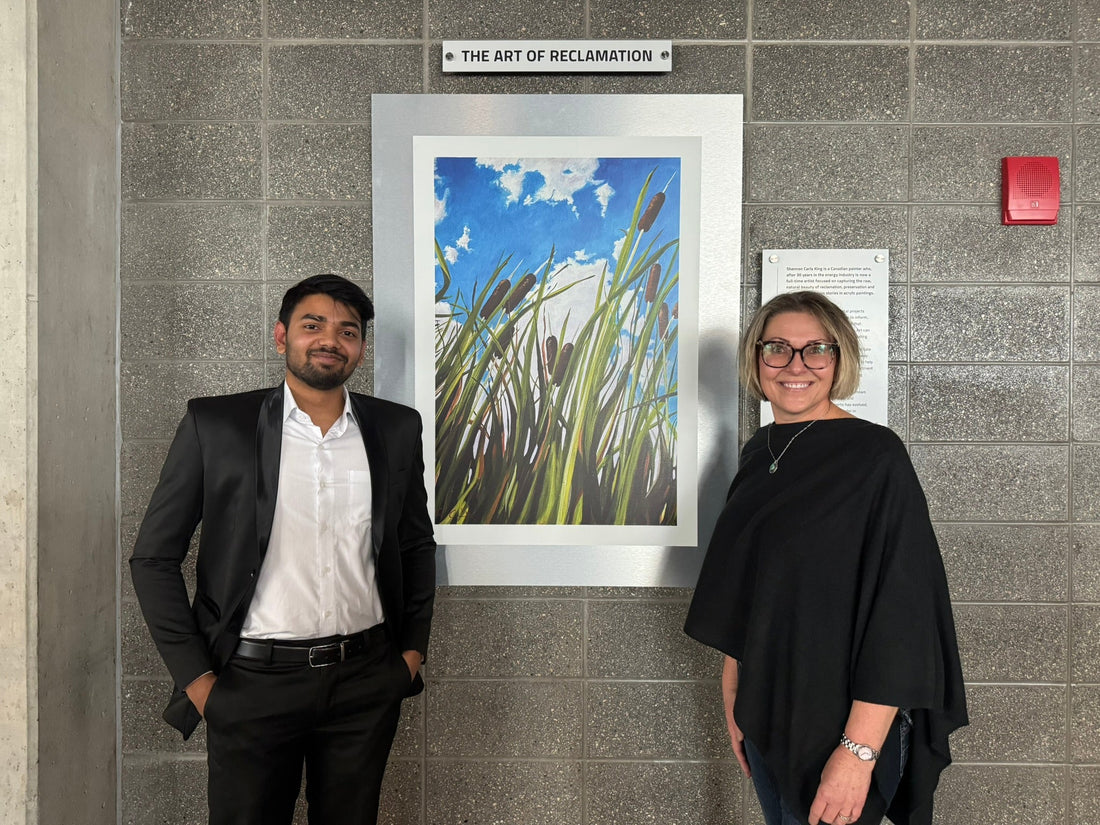(as published in Art Avenue Spring Issue 2025)
Creating and selling art, including works that are sold through commercial galleries, has long been tied to traditional outlets for creative expression. By focusing on these traditional avenues, artists risk missing out on a game-changing income source that could transform the artists’ job market.
There is an opportunity to build relationships to integrate artists with other seemingly unrelated industries. This fusion, known as Science, Technology, Engineering, Arts, and Mathematics (STEAM), holds the potential to elevate all these fields through innovative collaborations and non-traditional roles for artists.
The Untapped Potential of “STEAM”
In an era when interdisciplinary collaboration drives progress, the exclusion of Arts (the “A”) from STEM partnerships is a missed opportunity. Art has the power to connect humanity to technological advancements, making complex scientific concepts accessible and engaging to a broader audience. Artists bring unique perspectives, fostering creativity and problem-solving skills that are invaluable in other fields including those engaged in Science, Technology, Engineering and Mathematics. Pairing artists with more technical careers can create a fresh perspective that enhances both artistic expression and scientific innovation.
Redefining Boundaries of Art
As artists, it is important to progress this movement in Canada, to help redefine the boundaries of art and its role in society. For example, I have illustrated three books, and I am developing two collections of artworks, titled: "The Art of Reclamation" and "The Art of Conservation." These illustrate the intricate work of reclamation and conservation professionals who restore and preserve natural habitats. They are educational in addition to being visual.
By focusing on these themes, artists can highlight the often-overlooked successes in STEM fields, such as in environmental science. "The Art of Reclamation" captures the transformation of previously mined or industrial sites into thriving ecosystems, celebrating the dedication and expertise of reclamation professionals. Similarly, "The Art of Conservation" showcases the efforts to protect and maintain biodiversity, drawing attention to the critical work of conservationists.
There are many other industries where this partnership can also successfully be created such as healthcare, forestry, meteorology/climate, advancements in aeronautics or marine engineering and robotics. Consider other sectors for similar projects that artists may have previous involvement or great interest in.
Authenticity as a Source of Inspiration
My own area of focus began in 2020. I reflected on my life experiences and understood more clearly how authenticity in an artist’s work has to grow from a place of understanding of the influences of our past. We are all unique within our personal journeys. I am the sum of my experiences, my adventures, my career and my upbringing. Growing up on a farm near Drayton Valley, Alberta ensured many local businesses were focused on supporting the energy sector. I hiked, fished, swam, kayaked, snowshoed and spent a lot of time outdoors listening to the sounds of the trees, the red-winged blackbirds in the cattails and the new frogs in the spring.
I also spent over 30 years in the energy sector, many of which were supporting reclamation and closure plans and professionals who did scientific and environmental work. However, then and today, reclamation, preservation and conservation success stories are invisible to most, unless you are aware of the history of a site and the efforts made to restore or protect it. I believe in supporting the incredible skill and patience it takes to do this type of work – work that is often overlooked by the public, the media and by environmentally-supportive groups.
The Benefits of Collaborations
Industry professionals and artists may consider these creative collaborations too complex and technical, yet they have the greatest potential to increase public awareness through their visual appeal. This strategy also uniquely celebrates those directly involved in these efforts, fostering a deeper understanding and appreciation of their work, both to their colleagues and communities they serve. Moreover, these public exhibitions serve as a source of inspiration and hope, and instill a sense of pride, fostering a culture of curiosity and appreciation for industry success stories.
It also may provide greater purpose for the artist who has a keen interest in a certain sector. And for artists, rather than limiting their work to the confines of traditional galleries, there are other opportunities to exhibit in public and commercial spaces. By placing art in accessible locations – higher education, campuses, executive boardrooms, industrial workspaces - the artist bridges the gap between industry and art. These spaces may also help reveal the deeper meaning within an artist’s work that could be overlooked or oversimplified in traditional venues.
Artists have much to gain by embracing STEAM collaborations. In addition to being a lucrative avenue for art commissions, artists can harness the power of creative thinking to drive innovation and make science more relatable and engaging. By exhibiting in public and industry spaces, artists can reach a wider audience. The artist's work can ignite curiosity and encourage others to explore the intersections of art and science, paving the way for future collaborations. It is time for the art world to recognize and seize this vital income stream, enriching both the arts and STEM in the process.

